- Sorry, this product is unavailable.
-

 Here is a veritable tossed salad of resort guests: old, young, eccentric, snobbish, pleasant and revolting and a good mix of employees to create a real microcosm of human nature. There's Miss Dukemer, the worldly wise cashier; Purcell, the Assistant Manager who likes ladies and liquor; the rich Mellott sisters who share their suite with a Siamese cat; the wealthy couple who order one small breakfast between them; the elevator boy who has a hair fetish; the newly weds who aren't sure what goes where and many more memorable and eccentric characters.
Here is a veritable tossed salad of resort guests: old, young, eccentric, snobbish, pleasant and revolting and a good mix of employees to create a real microcosm of human nature. There's Miss Dukemer, the worldly wise cashier; Purcell, the Assistant Manager who likes ladies and liquor; the rich Mellott sisters who share their suite with a Siamese cat; the wealthy couple who order one small breakfast between them; the elevator boy who has a hair fetish; the newly weds who aren't sure what goes where and many more memorable and eccentric characters. -
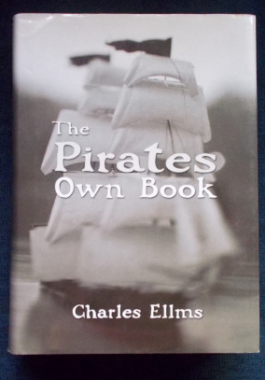 Originally published in 1837, here are the 'Authentic Narratives of the Most Celebrated Sea Robbers' - pirates! True stories of the diabolical desperadoes who plundered ships on the high seas and murdered their passengers and crews. The stories - based on contemporary newspaper accounts, trial proceedings and Admiralty records - describe in lurid detail the life, atrocities and bloody death of the infamous Black Beard as well as the cold-blooded exploits of Jean Lafitte, Robert Kidd, Edward Low, Thomas White, Anne Bonney, Mary Read and scores of other maritime marauders. For those interested in the true-life adventures of the ruthless men and women who sailed under the black flag so long ago. With illustrations reproduced from the original edition.
Originally published in 1837, here are the 'Authentic Narratives of the Most Celebrated Sea Robbers' - pirates! True stories of the diabolical desperadoes who plundered ships on the high seas and murdered their passengers and crews. The stories - based on contemporary newspaper accounts, trial proceedings and Admiralty records - describe in lurid detail the life, atrocities and bloody death of the infamous Black Beard as well as the cold-blooded exploits of Jean Lafitte, Robert Kidd, Edward Low, Thomas White, Anne Bonney, Mary Read and scores of other maritime marauders. For those interested in the true-life adventures of the ruthless men and women who sailed under the black flag so long ago. With illustrations reproduced from the original edition. -
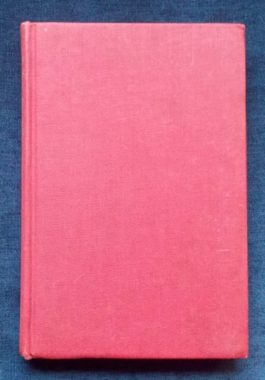
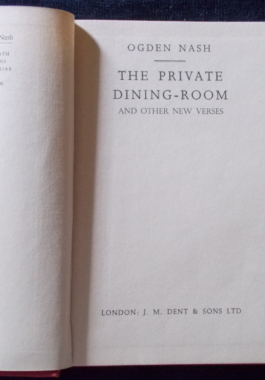 Nash observes the world around him and cannot resist making humorous, sly and very on-the-mark rhymes while often poking fun at society pretensions. There's even a few fractured fables and fairy tales in this collection. So, just for fun...
Nash observes the world around him and cannot resist making humorous, sly and very on-the-mark rhymes while often poking fun at society pretensions. There's even a few fractured fables and fairy tales in this collection. So, just for fun...I often grieve for Uncle Hannibal
Who inadvertently became a cannibal.
He asked Aunt Mary to roast him the gobbler;
She understood him to say - the cobbler.
-
 In some ways a sequel or successor to The Autocrat At The Breakfast-Table, there is plenty of philosophy, social critique and religious insights. Physician, poet, philosopher and essayist, Holmes also contributed much to medical reform in the 1800s. He was a member of the Fireside Poets and regarded as one of the best writers of his day. a collection of essays originally published in The Atlantic Monthly in 1857 and 1858 before being collected in book form. The essays take the form of a chiefly one-sided dialogue between the unnamed 'Author' and the other residents of a New England boarding house who are known only by their profession, location at the table or other defining characteristics. The topics discussed range from an essay on the unexpected benefits of old age to the finest place to site a dwelling and comments on the nature of conversation itself. The tone of the book is distinctly Yankee and takes a seriocomic approach to the subject matter. Each essay typically ends with a poem on the theme of the essay. There are also poems ostensibly written by the fictional disputants scattered throughout.
In some ways a sequel or successor to The Autocrat At The Breakfast-Table, there is plenty of philosophy, social critique and religious insights. Physician, poet, philosopher and essayist, Holmes also contributed much to medical reform in the 1800s. He was a member of the Fireside Poets and regarded as one of the best writers of his day. a collection of essays originally published in The Atlantic Monthly in 1857 and 1858 before being collected in book form. The essays take the form of a chiefly one-sided dialogue between the unnamed 'Author' and the other residents of a New England boarding house who are known only by their profession, location at the table or other defining characteristics. The topics discussed range from an essay on the unexpected benefits of old age to the finest place to site a dwelling and comments on the nature of conversation itself. The tone of the book is distinctly Yankee and takes a seriocomic approach to the subject matter. Each essay typically ends with a poem on the theme of the essay. There are also poems ostensibly written by the fictional disputants scattered throughout. -
 The son of the chief of Maia Island has taken Ati Manu, a jewelled collar which is their only valuable, to exchange for food for its starving people. Two men follow him through the jungle but he manages to hide the collar in a hollow tree before he is cornered and killed. The Brevitt family take up the search for the valuable collar despite the armed murderers who wait for them in the jungle. They are robbed of vital skin diving equipment and are attacked by sea creatures in their efforts to find Ati Manu and help the natives. Danger stalks the family as they search for the treasure, with plenty of adventures before the hunt ends. Illustrated by Stuart Tresilian.
The son of the chief of Maia Island has taken Ati Manu, a jewelled collar which is their only valuable, to exchange for food for its starving people. Two men follow him through the jungle but he manages to hide the collar in a hollow tree before he is cornered and killed. The Brevitt family take up the search for the valuable collar despite the armed murderers who wait for them in the jungle. They are robbed of vital skin diving equipment and are attacked by sea creatures in their efforts to find Ati Manu and help the natives. Danger stalks the family as they search for the treasure, with plenty of adventures before the hunt ends. Illustrated by Stuart Tresilian. -
 Sir Marmaduke Vane-Temperly, a man of the world who is weary of the world, goes forth to seek his vanished youth. He's cynical, pompous and ever the gentleman as befits his position. Of the many adventures that befall him, a mysterious murder is but one. He also meets Eve-Anne, a gentle, innocent 19 year old girl who on a quest for adventure and who knows him as 'John Hobbes', a gambler who cannot understand Eve-Anne's depth of generosity and feeling for those worse off than herself and her endless willingness to help them. Set in the Regency, when bucks and dandies thought it quite the adventure to meet the bruisers, vagabonds and footpads that abounded in an England that had a sharp divide between the rich and poor, the privileged and the commoners.
Sir Marmaduke Vane-Temperly, a man of the world who is weary of the world, goes forth to seek his vanished youth. He's cynical, pompous and ever the gentleman as befits his position. Of the many adventures that befall him, a mysterious murder is but one. He also meets Eve-Anne, a gentle, innocent 19 year old girl who on a quest for adventure and who knows him as 'John Hobbes', a gambler who cannot understand Eve-Anne's depth of generosity and feeling for those worse off than herself and her endless willingness to help them. Set in the Regency, when bucks and dandies thought it quite the adventure to meet the bruisers, vagabonds and footpads that abounded in an England that had a sharp divide between the rich and poor, the privileged and the commoners. -
 Ronnie Clarke, an Australian airline pilot, learns that John Pascoe has crashed in the remote Tasmanian bush trying to fly help to a sick girl and is lying with a fractured skull. Ronnie decides to try and fly a doctor there despite the dangerous conditions, since he has always admired John ever since he taught Ronnie to fly. By the time Ronnie reaches John, he has become close to the heart of the man, the secrets of his adventurous life and the two heartbreaks he has suffered.
Ronnie Clarke, an Australian airline pilot, learns that John Pascoe has crashed in the remote Tasmanian bush trying to fly help to a sick girl and is lying with a fractured skull. Ronnie decides to try and fly a doctor there despite the dangerous conditions, since he has always admired John ever since he taught Ronnie to fly. By the time Ronnie reaches John, he has become close to the heart of the man, the secrets of his adventurous life and the two heartbreaks he has suffered. -

 A series of hilariously-illustrated vignettes that follow the rise and fall of a number of stereotypes such as: the Athlete, the Girlfriend, the Soldier, the Poet, the Painter and so forth. Each page dominated by a lively, almost stylized drawing with only a few lines of text explaining a particular phase of the stereotype's life: Emergence, Success, Triumph, Temptation and Downfall.With numerous recognisable caricatures of the famous and near famous.
A series of hilariously-illustrated vignettes that follow the rise and fall of a number of stereotypes such as: the Athlete, the Girlfriend, the Soldier, the Poet, the Painter and so forth. Each page dominated by a lively, almost stylized drawing with only a few lines of text explaining a particular phase of the stereotype's life: Emergence, Success, Triumph, Temptation and Downfall.With numerous recognisable caricatures of the famous and near famous. -
 What's in a name? Well, plenty, according to this interesting little booklet. The word 'dunce' meaning slow-witted or dull is from the name Duns Scotus, a brilliant medieval teacher; Dick Whittington, mayor of London, did exist but is not the legendary poor boy with a pet cat seeking his fortune; Robert Louis Stevenson's infamous character Dr. Jekyll was based on a real man; Old 'Uncle Tom Cobbleigh' was a hotblooded and amorous red-headed man; Lady Godiva did get her gear off as a result of a bet with her husband - and Mother Goose did write a swag of nursery rhymes! Loads of interest in a small package.
What's in a name? Well, plenty, according to this interesting little booklet. The word 'dunce' meaning slow-witted or dull is from the name Duns Scotus, a brilliant medieval teacher; Dick Whittington, mayor of London, did exist but is not the legendary poor boy with a pet cat seeking his fortune; Robert Louis Stevenson's infamous character Dr. Jekyll was based on a real man; Old 'Uncle Tom Cobbleigh' was a hotblooded and amorous red-headed man; Lady Godiva did get her gear off as a result of a bet with her husband - and Mother Goose did write a swag of nursery rhymes! Loads of interest in a small package. -

 Frances is sent from her small Welsh village and warm, loving family to Maidenhurst School for Girls for education and a little smoothing out of her tomboy edges. There she makes friends, unwittingly makes enemies, has plenty of adventures, gets into trouble and develops 'crushes' on teachers and older girls in the school. She also teaches some of her school mates the meaning of 'honour' and courage. Written in 1925, the word 'love' as used by Frances and other characters when referring to teachers or older girls simply means a wish to emulate or intense admiration, being a common expression of the time.
Frances is sent from her small Welsh village and warm, loving family to Maidenhurst School for Girls for education and a little smoothing out of her tomboy edges. There she makes friends, unwittingly makes enemies, has plenty of adventures, gets into trouble and develops 'crushes' on teachers and older girls in the school. She also teaches some of her school mates the meaning of 'honour' and courage. Written in 1925, the word 'love' as used by Frances and other characters when referring to teachers or older girls simply means a wish to emulate or intense admiration, being a common expression of the time. -
 Our story open thus: In the first quarter of the thirteenth century, the evil doings of King John were yet fresh in the minds of men all over England, and the indirect consequences of his evil deeds were still acutely felt, and nowhere more than in Bedfordshire, where the scene of our story is laid. The county itself has much altered in appearance since that period. Great woods, intersected by broad, soft green lanes, overran its northern portion. Traces of these woods and roads still survive in Puddington Hayes and Wymington Hayes, and the great broad "forty-foot." South of this wild wooded upland, one natural feature of Bedfordshire remains unchanged. Then, as now, the Great Ouse took its winding, sluggish course from southwest to north-east across the county, twisting strangely, and in many places turning back upon itself as though loath to leave Bedfordshire. Some fifteen miles from point to point would have taken it straight through the heart of the little county, whereas its total course therein is more like fifty. One poetic fancy likens the wandering stream to a lover lingering with his mistress...
Our story open thus: In the first quarter of the thirteenth century, the evil doings of King John were yet fresh in the minds of men all over England, and the indirect consequences of his evil deeds were still acutely felt, and nowhere more than in Bedfordshire, where the scene of our story is laid. The county itself has much altered in appearance since that period. Great woods, intersected by broad, soft green lanes, overran its northern portion. Traces of these woods and roads still survive in Puddington Hayes and Wymington Hayes, and the great broad "forty-foot." South of this wild wooded upland, one natural feature of Bedfordshire remains unchanged. Then, as now, the Great Ouse took its winding, sluggish course from southwest to north-east across the county, twisting strangely, and in many places turning back upon itself as though loath to leave Bedfordshire. Some fifteen miles from point to point would have taken it straight through the heart of the little county, whereas its total course therein is more like fifty. One poetic fancy likens the wandering stream to a lover lingering with his mistress... -
 Book III of The Saint vs Crown Prince Rudolph. The Saint had decided to turn over a new leaf. But he hadn't reckoned with Prince Rudolf - nor with his old adversary's hankering for diamonds! Why would a man as rich as Rudolph care about the comparatively small value of the Montenegrian Crown jewels?
Book III of The Saint vs Crown Prince Rudolph. The Saint had decided to turn over a new leaf. But he hadn't reckoned with Prince Rudolf - nor with his old adversary's hankering for diamonds! Why would a man as rich as Rudolph care about the comparatively small value of the Montenegrian Crown jewels? -

 Don't feel like a novel? Then this is the perfect 'dip into' bedside book. There's humour, drama, history, poetry, satire... something for everyone in this volume of treasures from the Post: Reprieve For Jemmy And James/Apology For Printers/Adventure With A Tar Barrel, Benjamin Franklin; The Black Cat, Edgar Allan Poe; Assassination of President Lincoln, Official Gazette; Good-by, Jim, James Whitcomb Riley; The Man Who Could Not Be Cornered, George Harris Lorimer; The Sergeant's Private Madhouse, Stephen Crane; Carrie Nation And Kansas, William Allen White; The Passing Of 'Third Floor Back', Jerome K. Jerome; The Ransom Of Red Chief, O. Henry; The Great Pancake Record, Owen Johnson; The Nickelodeons, Joseph Medill Patterson, The Mishaps Of Gentle Jane, Fred R. Bechdolt; Sad Days At Old Siwash, George Fitch; A Piece Of Steak, Jack London; The Bolt From The Blue, G.K. Chesterton; The First Birdman, J.W. Mitchell; Words And Music/A Little Town Called Montignies St. Christophe/Speaking Of Operations, Irvin S. Cobb; Alibi Ike, Ring W. Lardner; Consider The Lizard, Eugene Manlove Rhodes; Who's Who - And Why? Post Ads; In Alsace, Edith Wharton; Turn About, William Faulkner; A Victory Dance, Alfred Noyes, Pershing At The Front, Arthur Guiterman; Scattergood Baines - Invader, Clarence Budington Kelland; Beyond The Bridge, Joseph Hergesheimer; Tutt And Mr Tutt - In Witness Whereof, Arthur Train; Tact, Thomas Beer; Babylon Revisited, F. Scott Fitzgerald; Three Poems, Edna St. Vincent Millay; The Terrible Shyness Of Orvie Stone, Booth Tarkington; Tugboat Annie, Norman Reilly Raine; Room To Breathe In, Dorothy Thompson; Everybody Out, George S. Brooks; Wildfire, Elsie Singmaster; Lightning Never Strikes Twice, Mary Roberts Rinehart, The Devil And Daniel Webster, Stephen Vincent Benét; Money, Gertrude Stein; Hundred-Tongued Charley, The Great Silent Orator, Alva Johnston; Dygartsbush, Walter D. Edmonds; Pull, Pull Together, J.P, Marquand; The Child By Tiger, Thomas Wolfe; The Hunting Of The Haggis, Guy Gilpatric; Poems, Ogden Nash; My Father Was The Most Wretchedly Unhappy Man I Ever Knew, Gene A. Howe; The Atom Gives Up, William L. Laurence; City In Prison, Joseph Alsop; How The British Sunk The Scharnhorst, C.S. Forester; The Immortal Harpy, Hobert Douglas Skidmore; Solid Citizen, Pete Martin; The Last Night, Storm Jameson; A Few Kind Words For Uncle Sam, Bernard M. Baruch; Vermont Praise, Robert P. Tristram Coffin; Is There A Life After Forty? Robert M. Yoder; Note On Danger B, Gerald Kersch; The Murderer, Joel Townsley Rogers; The Colonel Saved The Day, Harold H. Martin; Old Ironpuss, Arthur Gordon; A Ballad Of Anthologists, Phyllis McGinley; The Ordeal Of Judge Medina, Jack Alexander; Death On M-24, John Bartlow Martin; The Secret Ingredient, Paul Gallico; I Grew Up With Eisenhower, R.G. Tonkin; The Devil In The Desert, Paul Horgan. Illustrated. Cover art by Norman Rockwell.
Don't feel like a novel? Then this is the perfect 'dip into' bedside book. There's humour, drama, history, poetry, satire... something for everyone in this volume of treasures from the Post: Reprieve For Jemmy And James/Apology For Printers/Adventure With A Tar Barrel, Benjamin Franklin; The Black Cat, Edgar Allan Poe; Assassination of President Lincoln, Official Gazette; Good-by, Jim, James Whitcomb Riley; The Man Who Could Not Be Cornered, George Harris Lorimer; The Sergeant's Private Madhouse, Stephen Crane; Carrie Nation And Kansas, William Allen White; The Passing Of 'Third Floor Back', Jerome K. Jerome; The Ransom Of Red Chief, O. Henry; The Great Pancake Record, Owen Johnson; The Nickelodeons, Joseph Medill Patterson, The Mishaps Of Gentle Jane, Fred R. Bechdolt; Sad Days At Old Siwash, George Fitch; A Piece Of Steak, Jack London; The Bolt From The Blue, G.K. Chesterton; The First Birdman, J.W. Mitchell; Words And Music/A Little Town Called Montignies St. Christophe/Speaking Of Operations, Irvin S. Cobb; Alibi Ike, Ring W. Lardner; Consider The Lizard, Eugene Manlove Rhodes; Who's Who - And Why? Post Ads; In Alsace, Edith Wharton; Turn About, William Faulkner; A Victory Dance, Alfred Noyes, Pershing At The Front, Arthur Guiterman; Scattergood Baines - Invader, Clarence Budington Kelland; Beyond The Bridge, Joseph Hergesheimer; Tutt And Mr Tutt - In Witness Whereof, Arthur Train; Tact, Thomas Beer; Babylon Revisited, F. Scott Fitzgerald; Three Poems, Edna St. Vincent Millay; The Terrible Shyness Of Orvie Stone, Booth Tarkington; Tugboat Annie, Norman Reilly Raine; Room To Breathe In, Dorothy Thompson; Everybody Out, George S. Brooks; Wildfire, Elsie Singmaster; Lightning Never Strikes Twice, Mary Roberts Rinehart, The Devil And Daniel Webster, Stephen Vincent Benét; Money, Gertrude Stein; Hundred-Tongued Charley, The Great Silent Orator, Alva Johnston; Dygartsbush, Walter D. Edmonds; Pull, Pull Together, J.P, Marquand; The Child By Tiger, Thomas Wolfe; The Hunting Of The Haggis, Guy Gilpatric; Poems, Ogden Nash; My Father Was The Most Wretchedly Unhappy Man I Ever Knew, Gene A. Howe; The Atom Gives Up, William L. Laurence; City In Prison, Joseph Alsop; How The British Sunk The Scharnhorst, C.S. Forester; The Immortal Harpy, Hobert Douglas Skidmore; Solid Citizen, Pete Martin; The Last Night, Storm Jameson; A Few Kind Words For Uncle Sam, Bernard M. Baruch; Vermont Praise, Robert P. Tristram Coffin; Is There A Life After Forty? Robert M. Yoder; Note On Danger B, Gerald Kersch; The Murderer, Joel Townsley Rogers; The Colonel Saved The Day, Harold H. Martin; Old Ironpuss, Arthur Gordon; A Ballad Of Anthologists, Phyllis McGinley; The Ordeal Of Judge Medina, Jack Alexander; Death On M-24, John Bartlow Martin; The Secret Ingredient, Paul Gallico; I Grew Up With Eisenhower, R.G. Tonkin; The Devil In The Desert, Paul Horgan. Illustrated. Cover art by Norman Rockwell. -
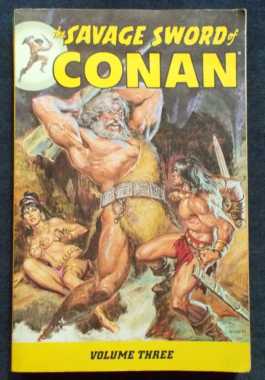 An omnibus edition of thirteen Conan tales adapted by Roy Thomas and presented as graphic novels. This volume includes: Cimmeria; The Jewels Of Gwahlur; Beyond The Black River; The Children Of Jebbhel Sag; The Blood Of The Gods; Child Of Sorcery; The Scarlet Citadel; The Flame Knife; The Ghouls Of Yanaidar; The Curse Of The Monolith; The Lair Of The Ice Worm; Black Tears; Hawks Over Shem; The Hyborean Age. Artists: Barry Windsor-Smith; Dick Giordano; John Buscema; Tony Dezuniga; Alfredo Alcala; Ernie Chan; Frank Brunner; Gene Colan; Pablo Marcos; Carmine Infantino and Tim Conrad. Adapted from the stories by Robert E. Howard, L. Sprague de Camp, Lin Carter and Christy Marx. Front cover art by Earl Norem. Back cover art by Keith Parkinson.
An omnibus edition of thirteen Conan tales adapted by Roy Thomas and presented as graphic novels. This volume includes: Cimmeria; The Jewels Of Gwahlur; Beyond The Black River; The Children Of Jebbhel Sag; The Blood Of The Gods; Child Of Sorcery; The Scarlet Citadel; The Flame Knife; The Ghouls Of Yanaidar; The Curse Of The Monolith; The Lair Of The Ice Worm; Black Tears; Hawks Over Shem; The Hyborean Age. Artists: Barry Windsor-Smith; Dick Giordano; John Buscema; Tony Dezuniga; Alfredo Alcala; Ernie Chan; Frank Brunner; Gene Colan; Pablo Marcos; Carmine Infantino and Tim Conrad. Adapted from the stories by Robert E. Howard, L. Sprague de Camp, Lin Carter and Christy Marx. Front cover art by Earl Norem. Back cover art by Keith Parkinson. -
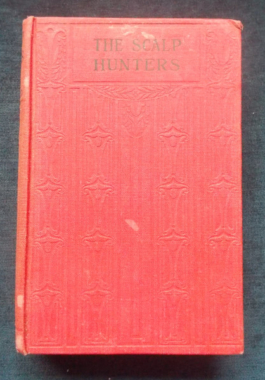 First published in 1851, this novel tells a large part of the early history of the differences between the eastern settlers and the American Indian and the clashes of difference between what it thought to be right or wrong at that time. Described as gritty and often brutal, it is the tale of Haller, who meets up with the mysterious Seguin after picking up with some prairie merchants. He instantly falls in love with Seguin's daughter Zoe. The innocent romance progresses to the point that he wishes to ask for her hand in marriage but Seguin will only permit it if Haller helps him to rescue his other daughter Adele from the Navajo Indians who abducted her when just a child. Not only are the Indians hostile - the adventurers must also battle the elements, hunger, thirst and wild animals.
First published in 1851, this novel tells a large part of the early history of the differences between the eastern settlers and the American Indian and the clashes of difference between what it thought to be right or wrong at that time. Described as gritty and often brutal, it is the tale of Haller, who meets up with the mysterious Seguin after picking up with some prairie merchants. He instantly falls in love with Seguin's daughter Zoe. The innocent romance progresses to the point that he wishes to ask for her hand in marriage but Seguin will only permit it if Haller helps him to rescue his other daughter Adele from the Navajo Indians who abducted her when just a child. Not only are the Indians hostile - the adventurers must also battle the elements, hunger, thirst and wild animals. -

A story of Viking days. In the middle of the banqueting hall, where Jarl Halfdene stood watching the crowd on the beach, and looking at him in the old man's arms eyes. "In your trust, Jarl Halfdene!" he said at last in solemn tones." "As the death of the band!" As solemnly he replied, "Halfdene!" and looking as earnestly into Birkabegn's face, as he pressed the little child to his breast. The crown of the gilt raven, which was held in readiness, grasped the hilt of his long sword, and hurried out into the gathering darkness. A little while after King Birkabegn was gone Hablok was crying piteously, and all Jarl Halfdene's coaxing and endeavors to console him were useless, but he was wearied out, and before the last ship had pushed off from the beach, he lay sound asleep in Halfdene's arms. The old man still stood watching the dark line on the sea, and the old men were left behind, and two or three nobles and councillors in the care of the kingdom. These nobles were called jarls, and the most trusted and beloved among them at King Birkabegn's court was Jarl Halfdene. Right well he deserved to be so; For King Birkabegn's father, then to Birkabegn himself, he had a trusty right hand, and he was shown as wise as he was honorable and loyal; and the king knew that no harm could ever be his little son while he was in Jarl Halfdene's care.
-

Yes, everything you thought you knew is STILL wrong! As made famous on QI - Quite Interesting with Stephen Fry. You'll be amazed at which country has the lowest age of consent; and that you should definitely NOT urinate on a jellyfish sting to ease the pain; and you will also discover when a spiral staircase is not a spiral staircase. Great potential for trivia buffs.
-
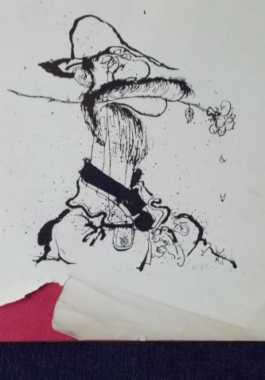
 Ronald Searle ( St. Trinians, Down With Skool, How To Be Topp, et al) describes several fantasy, fictional and overwhelming encounters with Toulouse-Lautrec - with illustrations!
Ronald Searle ( St. Trinians, Down With Skool, How To Be Topp, et al) describes several fantasy, fictional and overwhelming encounters with Toulouse-Lautrec - with illustrations! -
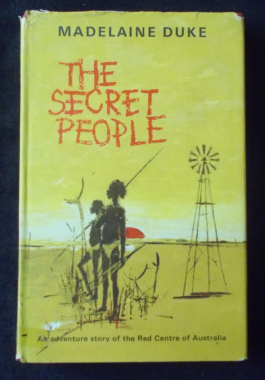 Four men set out on camel-back to cross the starkly beautiful Red Centre. Two of the men have mysterious pasts and their stories are woven into this novel that reveals dramatically the indigenous way of life. Illustrated by Mona Killpack.
Four men set out on camel-back to cross the starkly beautiful Red Centre. Two of the men have mysterious pasts and their stories are woven into this novel that reveals dramatically the indigenous way of life. Illustrated by Mona Killpack. -

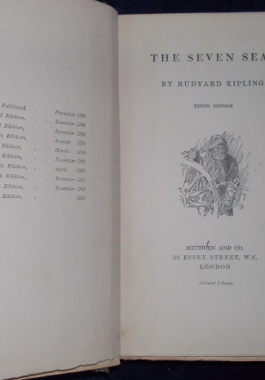 The Seven Seas is a series of poems centred on Britain’s role in colonialism and Empire building. With reverberating lyrics and powerful imagery, Kipling writes of the ruthless means that were often employed to add nations to the glorious Empire, and the subsequent effects upon these colonised nations. Though disturbing and unsettling in theme, Kipling’s lyrical dexterity makes these poems strangely compelling reading.
The Seven Seas is a series of poems centred on Britain’s role in colonialism and Empire building. With reverberating lyrics and powerful imagery, Kipling writes of the ruthless means that were often employed to add nations to the glorious Empire, and the subsequent effects upon these colonised nations. Though disturbing and unsettling in theme, Kipling’s lyrical dexterity makes these poems strangely compelling reading. -
 Of all the rough frontier towns that stretched in a ragged line along the eastern bank of the Missouri, Council Bluffs seemed most alive with the robust spirit of the time. There the crowd was most motley; there the leaping pulse could best be felt; there was the very vortex of the mad maelstrom of passionate hope, desire, and purpose. An American frontier story about the settling of Nebraska in 1854.
Of all the rough frontier towns that stretched in a ragged line along the eastern bank of the Missouri, Council Bluffs seemed most alive with the robust spirit of the time. There the crowd was most motley; there the leaping pulse could best be felt; there was the very vortex of the mad maelstrom of passionate hope, desire, and purpose. An American frontier story about the settling of Nebraska in 1854. -
 De Vaca was one of hundreds of men who left Spain in 1527 on an expedition headed by Panfilo de Narvaez. The mission was to explore Florida. This is the eyewitness account of how an expedition of over 600 men and five ships was reduced to a band of four half-mad survivors who staggered into Mexico City, having unintentionally become the first Europeans to cross the American Southwest via Texas, Ne Mexico and Arizona. It is the quintessential travel horror story.
De Vaca was one of hundreds of men who left Spain in 1527 on an expedition headed by Panfilo de Narvaez. The mission was to explore Florida. This is the eyewitness account of how an expedition of over 600 men and five ships was reduced to a band of four half-mad survivors who staggered into Mexico City, having unintentionally become the first Europeans to cross the American Southwest via Texas, Ne Mexico and Arizona. It is the quintessential travel horror story. -
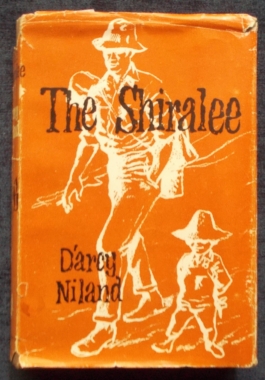
The Shiralee: Darcy Niland
$10.00A shiralee is a swag, a burden - and Macauley tramps through the back towns of New South Wales, looking for work, with his swag and his shiralee - his four year old daughter, Buster, taken from her loose-living mother by Macauley in a fit of vengeful rage. Buster is a bundle of loyalty, fortitude and natural childishness, yet she is no joy to Macauley, who treats her with uncompromising firmness. She must go on walking with him; she must stop her chattering when he wants quiet; she must not complain. But he has a grudging affection for her, an affection which grows without his realising it - until it is threatened. Now, not only must he admit his love for his daughter, his shiralee, but he must also realise how many true friends he really has. Here are other very real Australian characters: shopkeepers, stock agents, publicans, shearers, ex-fighters - all set against the Australian bush background of the 1950s. Niland's first novel, filmed twice. -

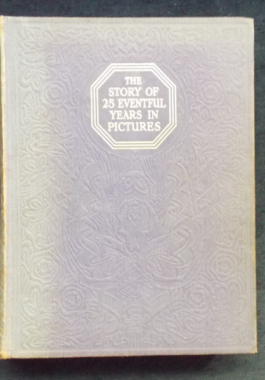 Those were eventful years for King George V and the world at large; the Great War that should have ended all wars was fought and won by the Allies; the motorcar took over the streets; the stock market rose and fell with a resounding crash; Viscountess Astor became the first woman MP in England; hemlines rose above the knee and plane travel became passè. A fabulous pictorial history of 25 years that really did change the world.
Those were eventful years for King George V and the world at large; the Great War that should have ended all wars was fought and won by the Allies; the motorcar took over the streets; the stock market rose and fell with a resounding crash; Viscountess Astor became the first woman MP in England; hemlines rose above the knee and plane travel became passè. A fabulous pictorial history of 25 years that really did change the world. -
 Stephen Rudge, one of a rowdy gang of boys in a colliery village, is literally knocked head over heels into the Scouts by the Scoutmaster's car. He had been getting into mischief out of boredom and selfishness; as a Scout he finds life much more interesting and purposeful, with plenty of adventures and one or two steps backwards as he battles to get on the 'right path'.
Stephen Rudge, one of a rowdy gang of boys in a colliery village, is literally knocked head over heels into the Scouts by the Scoutmaster's car. He had been getting into mischief out of boredom and selfishness; as a Scout he finds life much more interesting and purposeful, with plenty of adventures and one or two steps backwards as he battles to get on the 'right path'. -

 Hudson explores the forces responsible for bringing about the Renaissance, which he describes as...the West's transition from the medieval to the modern world. Voyages of discovery, inventions, the revival of classical learning and the advent of science contribute to the intellectual upheavals of this creative period which are reflected in its literature and art. Hudson focuses on the one thread of continuity which he sees as both the seed and the fruit of this exciting era: the awakening of secular humanism and the emergence of the individual. Chapters: The Renaissance In General; The Age Of Invention And Discovery; The Revival Of Learning; The Renaissance In Religion: The Reformation; Science And Philosophy; Art, Literature And Education. Illustrated.
Hudson explores the forces responsible for bringing about the Renaissance, which he describes as...the West's transition from the medieval to the modern world. Voyages of discovery, inventions, the revival of classical learning and the advent of science contribute to the intellectual upheavals of this creative period which are reflected in its literature and art. Hudson focuses on the one thread of continuity which he sees as both the seed and the fruit of this exciting era: the awakening of secular humanism and the emergence of the individual. Chapters: The Renaissance In General; The Age Of Invention And Discovery; The Revival Of Learning; The Renaissance In Religion: The Reformation; Science And Philosophy; Art, Literature And Education. Illustrated.



